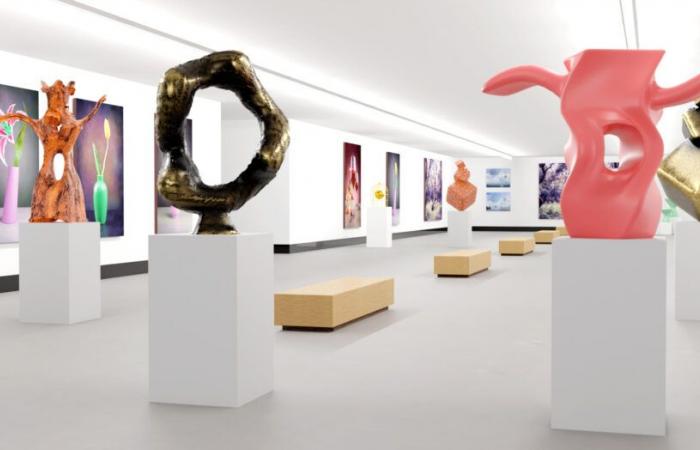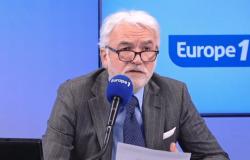Integrating corporate sponsorship into the organization of the local authority: the original model adopted by the department of Essonne set to become widespread?
In June 2017, the department of Essonne established a foundation dedicated to the protection and restoration of the heritage of Essonne as well as the acquisition of works of Art intended to expand the collections of departmental museums. Essonne Mécénat is the first foundation developed by a department, it is housed under the aegis of the Heritage Foundation.
Seek innovative and sustainable financing methods
The creation of the Essonne Mécénat Foundation took place in a context marked by the increase in maintenance costs for public domains owned by the department, including a certain number of sites of major heritage interest: the domains of Chamarande and Méréville. , Misery or Montauger, or the Foujita House-workshop, the French Museum of Photography in Bièvres, etc. Faced with these growing financing needs, the economic model of collection through subscription seemed ill-suited. The department was also concerned about the future of the Méreville estate, which needed to be renovated and maintained to be open to the public in the long term. Finally, he wanted the inhabitants of the department to be able to take greater ownership of Essonne's heritage.
A sheltered foundation
The department has chosen to create a foundation sheltered under the aegis of the Heritage Foundation, launched in June 2017 under the sponsorship of Stéphane Bern. The foundation is administered by an executive committee made up of seven departmental elected officials, including the president of the Departmental Council, a representative of the Heritage Foundation and a qualified personality: an architect from Bâtiments de France. The foundation can receive donations from individuals or companies but also benefit from skills sponsorship (engineering/consulting in addition to the intervention of the department's teams).
Three renovations completed and major projects underway
Since its creation, Essonne Mécénat has collected more than 500,000 euros and finalized three projects:
– the restoration of the Goose Game of the Departmental Domain of Chamarande, of which there are only three examples of this type remaining in France, reopened to the public in June 2018,
– the renovation of the vegetable garden bridge, one of the old landscape factories of the Domaine de Méréville inaugurated on the occasion of Heritage Days in 2022,
– the Bridge with the Golden Balls, recreated by the artist Jean-Michel Othoniel based on the original plans for the Domaine de Méréville, inaugurated in June 2023.
Other projects are under construction:
– a new museum space and the acquisition of five works for the Foujita house-studio,
– the hydro-ecological restoration of the basins and water mirrors of Méréville, and the restoration project of the castle which began in the first quarter of 2024. The Essonne Departmental Council will soon begin a major restoration project of the Domaine de Chamarande castle . On this occasion, a call for donations will be launched to support the restoration of the floors with a view to doubling the exhibition spaces.
Target corporate sponsors…
Essonne Mécénat directs its prospecting towards SMEs in the departmental territory. Donor companies can make a targeted contribution to a project or site, or a donation to the foundation which uses the funds collected according to the priorities defined by the executive council of Essonne Mécénat and the progress of the projects in accordance with the wishes of the company. The foundation has adopted a new compensation grid for donors: site visit, construction site visit, gift linked to the nature of the sponsorship project, loan of a work of art from the Departmental Contemporary Art Fund, etc. and this depending on the amount of their donation. In addition, these companies benefit from tax advantages in return for their donations. The common law regime put in place for businesses within the framework of the law Aillagon of 2003 corresponds to a reduction in corporate tax (IS) equal to 60% of the sums given (CGI, art. 238 bis) within the limit of €20,000 or 5‰ of the turnover when the latter amount is higher. If this threshold is exceeded or if the result for the current financial year is zero or negative, it is however possible to carry the surplus over to the following five financial years. For large companies, the tax reduction rate is lowered from 60 to 40% for donations exceeding 2 million euros per year.
…and donations from individuals
Donations from individuals also help support the collection. In the space of a few months after its creation, the foundation collected 50,000 euros in donations from individuals. Their donations also benefit from tax advantages. They are in fact deductible from personal income tax (IR) up to 66% of the amount of the donation within the limit of 20% of the donor's taxable income. Donations also entitle you to a reduction in the real estate wealth tax (IFI) up to 75% of the donation within the limit of 50,000 euros (the threshold is therefore reached with a donation of 66,666 euros), except for donation collections organized for private buildings protected as historic monuments or labeled by the Heritage Foundation.
A model that seduces
The initiative inspired other services in the department to seek partners. The department has thus established corporate partnerships in the service of its cultural policy, for example for the Essonne en scène festival hosted in the Domaine de Chamarande park, outside the scope of the foundation. “These partners can also meet tomorrow within the framework of the foundation: it is a virtuous circle that must be nourished from all the opportunities offered by the public action of the community”, underlines at this point regard Brigitte Vermillet, vice-president of the Essonne Departmental Council in charge of heritage, strategy and the promotion of departmental estates, president of the Essonne Mécénat Foundation. The department's choice to equip itself with an autonomous legal vehicle is “perceived as a source of balance: it guarantees donors a certain “tightness” with the decisions of the departmental council – but for projects which are well prioritized by the departmental assembly” (Île-de-France Region, Culture and Communication Commission, Opinion No. 2023-25, Acting for local cultural patronage of Ile-de-France businesses). For Fanny Malvezin, director of patronage and partnerships for the department of Essonne, “this distinction also makes it possible to clearly separate the relationships between the foundation receiving donations from local businesses, and the departmental council as public buyer or recipient of funds. subsidies”.






